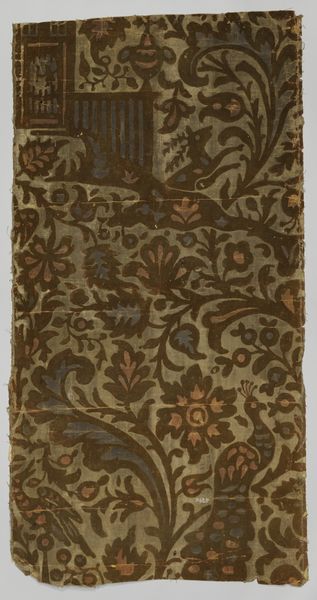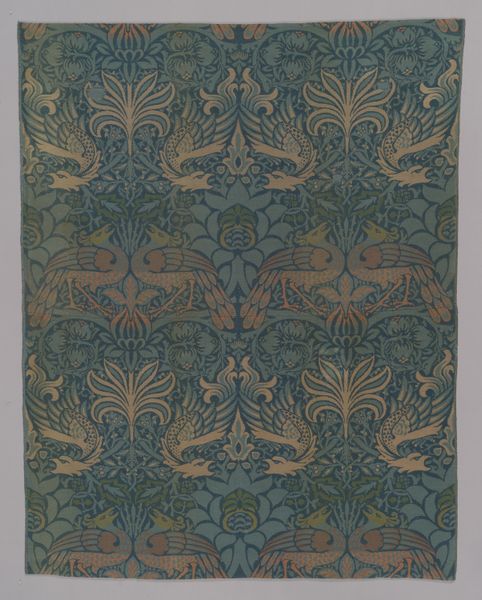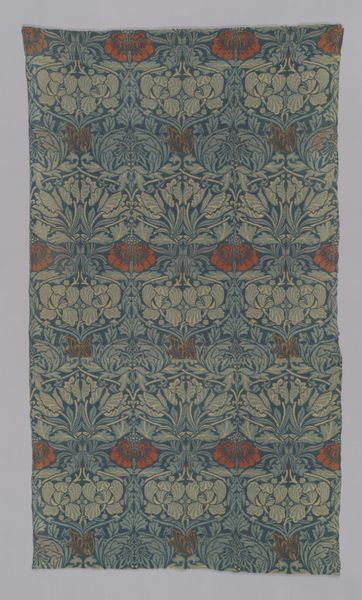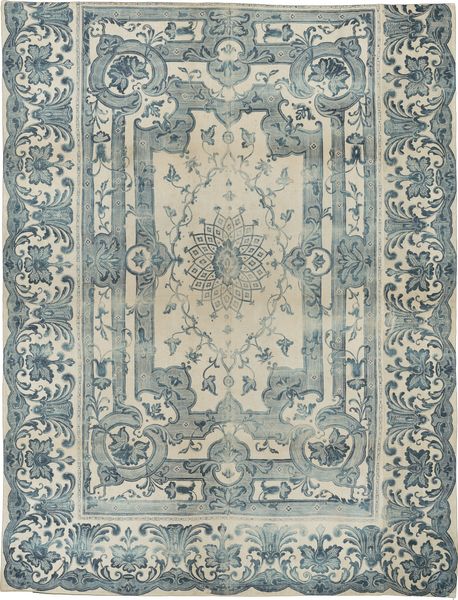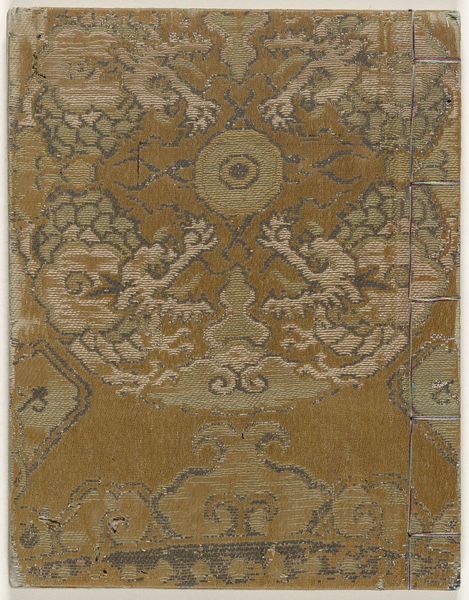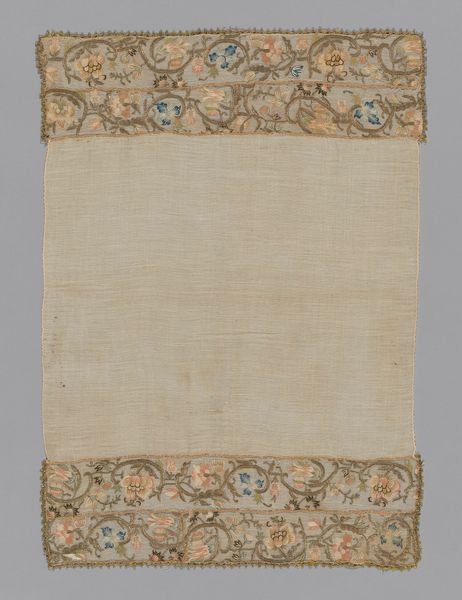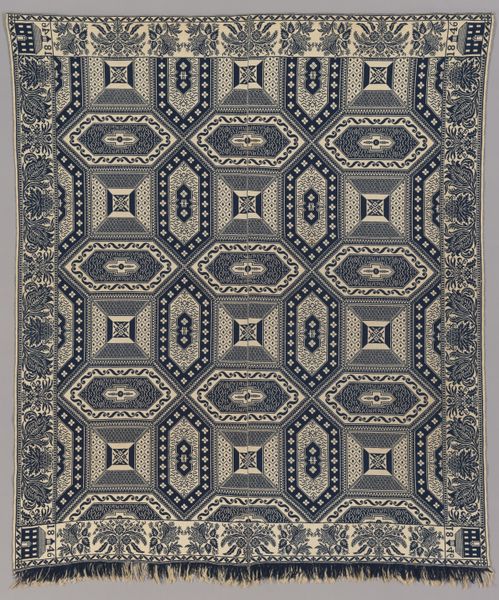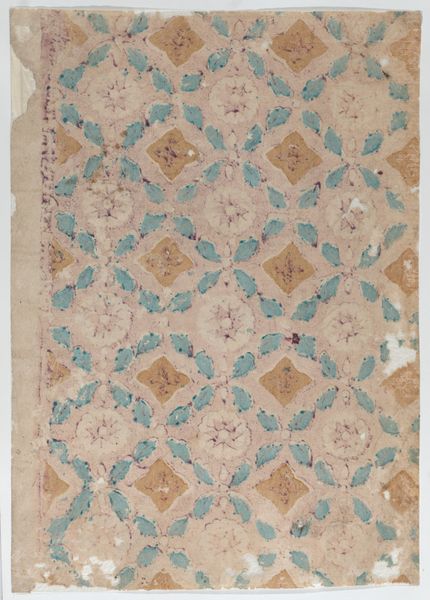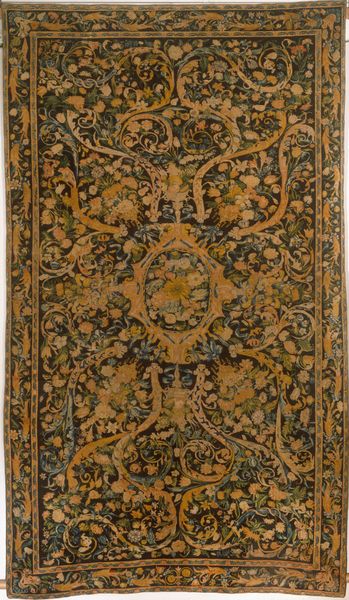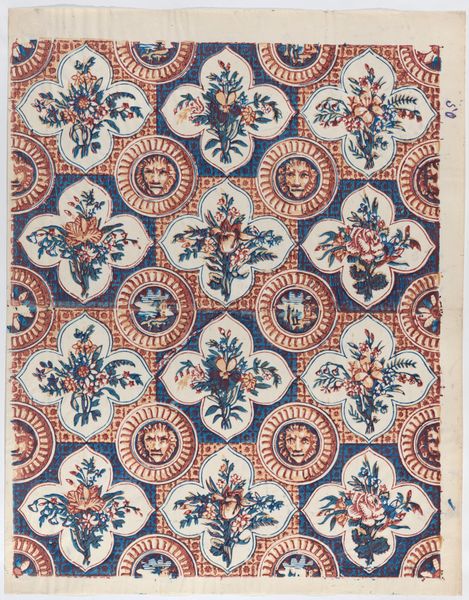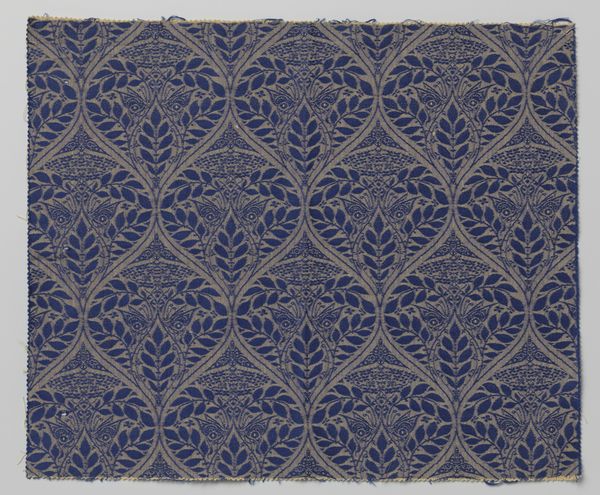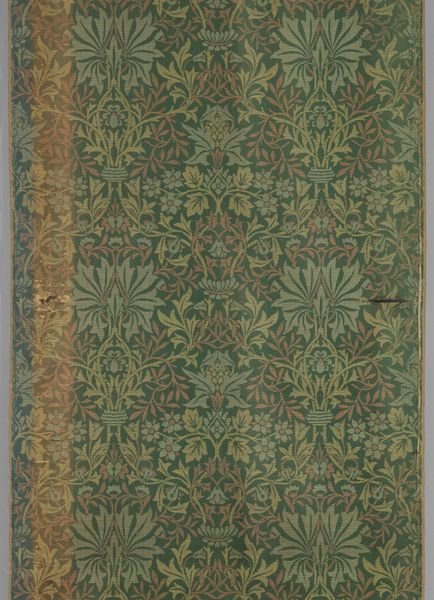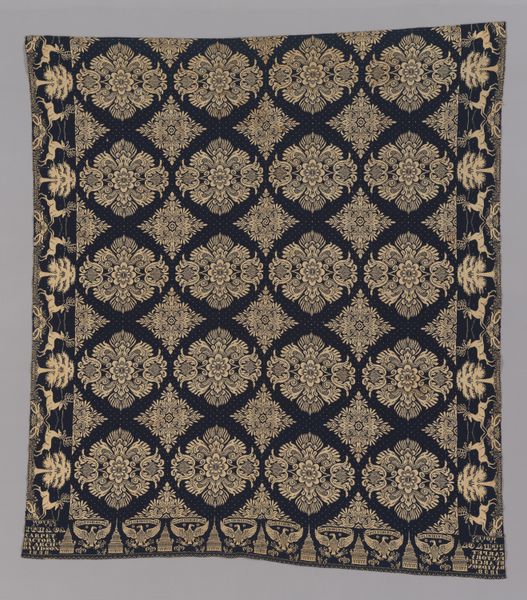
Dimensions: Overall ("a" confirmed): 67 x 70 in. (170.2 x 177.8 cm); Overall ("b" confirmed): 37 3/4 x 53 1/4 in. (95.9 x 135.3 cm); Overall ("c" confirmed): 60 1/4 x 28 in. (153 x 71.1 cm); Overall ("d" confirmed): 20 3/4 x 53 3/4 in. (52.7 x 136.5 cm); Overall ("e" confirmed): 19 x 49 1/2 in. (48.3 x 125.7 cm); Overall ("f" confirmed): 2 3/4 x 55 in. (7 x 139.7 cm); Overall (assembled): 67 x 60 in. (170.2 x 152.4 cm)
Copyright: Public Domain
Curator: Looking at this textile, what first strikes you? Editor: An almost Victorian melancholia! Despite all the blooms, that deep blue sort of absorbs the light. Is this "Honeysuckle" from William Morris, circa 1876? Curator: Indeed it is. Woven likely on a Jacquard loom—we must not forget the technology, the gears and levers that allow such complexity! Look closely at the density of detail, the near-obsessive layering of the flora. It practically vibrates with suppressed energy. Editor: Suppressed is key. Because, while other designers embraced the machine wholeheartedly, Morris held a complicated view, yearning for an idealized medieval craftsmanship, even as his designs often relied on industrial production to reach a broader audience. Curator: And he really threw himself into the work itself. The Arts and Crafts ethos prioritized honest materials and skillful construction. This pattern speaks to that reverence for the handmade. I imagine the weaver, lost in the intricate dance of shuttle and warp... feeling rather overwhelmed by it all, if you ask me. It makes me sweat! Editor: Absolutely. Consider also the social context, right? Here's Morris critiquing industrialized society with works still intended for elite consumption, adorning their homes with his nature-inspired utopia while workers toiled away creating those same commodities. The irony is stark. Curator: Isn't it always? Maybe it's more about offering a glimmer of beauty, a handcrafted resistance in a world churning out…well, everything. These repeating flowers are more than meets the eye, almost trying to grow wild on this constrained material. I quite like it now. It breathes! Editor: Exactly, the tension between the hand and the machine, the ideal and the reality… that's where the true interest lies for me. And with the awareness of its many hands involved in the process. Curator: Thank you for your thoughts!
Comments
No comments
Be the first to comment and join the conversation on the ultimate creative platform.
